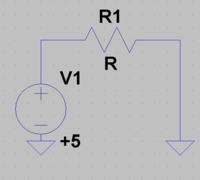juz_ad
Full Member level 2
I have a +5V DC fixed voltage power supply that is rated to give (up to?) 1A.
Is there a test circuit that will let me use the current reading on a multimeter to read the maximum amount of current this power supply can actually deliver?
Thanks.
Is there a test circuit that will let me use the current reading on a multimeter to read the maximum amount of current this power supply can actually deliver?
Thanks.
